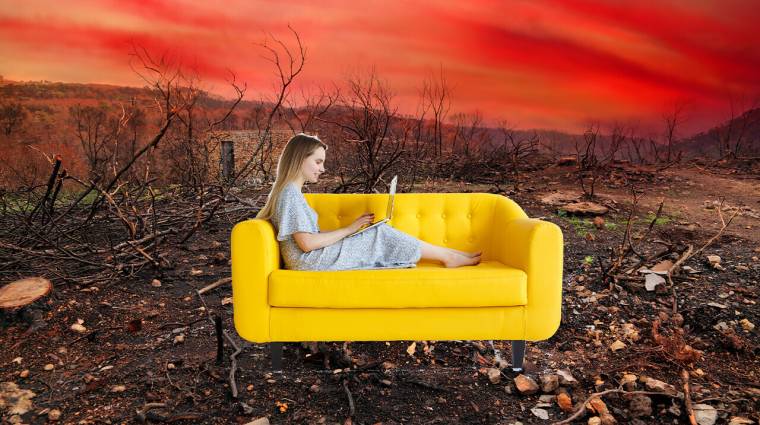At least that’s what a recent study says.
26 percent of people still work from home, while another 11 percent work in hybrid businesses. In the UK, only 5% of workers were working from home in 2019. The outbreak and nighttime office closures at the time of the first closure meant that 47 per cent of workers did the same in April 2020.
As fewer people commute and less food is wasted as workplaces previously associated with meals are held online, many hope that the move to remote work will benefit workers and the environment. But in Britain, the issue of sustainability came up particularly sharply because so many people in the cities rented jointly.
Partly for this reason, partly for financial reasons, not everyone can afford a home office, extra heating or internet bills. Also, the cost of heating and cooling individual homes during the day compared to offices can mean that remote work is less energy efficient. Next Web research examining office workers’ adaptation to working from home during the first shutdown in 2020 revealed two worrying trends: the duplication of office equipment and the need for more space and larger homes.
To set up home offices, employees purchased tech gadgets and fixtures that are often shipped around the world. Worldwide sales of laptops and desktops grew 11.2 percent between April and June 2020, with 72.3 million units shipped. Monitor sales are also up and webcams are temporarily out of stock across the UK. Online searches for desks and chairs grew 438 percent and 300 percent, respectively, in the previous year. Purchases of office equipment and furniture peaked during the first short period, but demand is likely to remain high. Five times more people want to work from home now than in 2019.
Furnishing home offices with new chairs, computers, monitors, desks and shelves has also fueled the desire for larger homes.
a Research has shownThat because working from home, many people want homes that have a larger kitchen, free space, office, garage, and garden. The closures have led to a collective reassessment of what one expects from one’s home. The sense of calm and privacy is often lost when several people share the same room. And while many offices are essentially co-working spaces, it has proven difficult to work in one room with someone else doing other work, especially when making voice or video calls.
Since the first close, property sales have jumped, with June bringing in the most sales since records began. Most of the sales affected people who moved from cities to suburbs and the countryside, where homes tend to offer more space. This is unfortunately bad news for sustainability. Rising per capita living space can increase energy consumption, and suburban homes usually emit more carbon. Even people who move to the countryside to work from home more often end up emitting more carbon on the go because they travel less frequently but for longer distances.
In offices and homes, there is duplication of equipment and a simultaneous need for heating and lighting due to the fact that workers work in two workplaces, which is a particularly unsustainable solution.
Although some workplaces allowed workers to take their office equipment home at the time of the first shutdown, difficulties in obtaining a webcam and long waiting times for office equipment showed that most workplaces failed to properly allocate resources or support workers. Companies that are currently downsizing their offices can offer discounts on reserve assets. Or they can reject the hybrid model and encourage them to work exclusively at home or in the office.
Hardware, software, tests, curiosities and colorful news from the world of IT by clicking here!










































